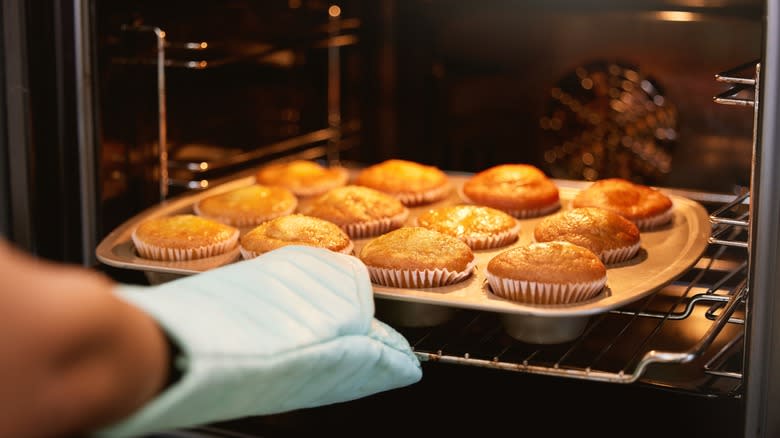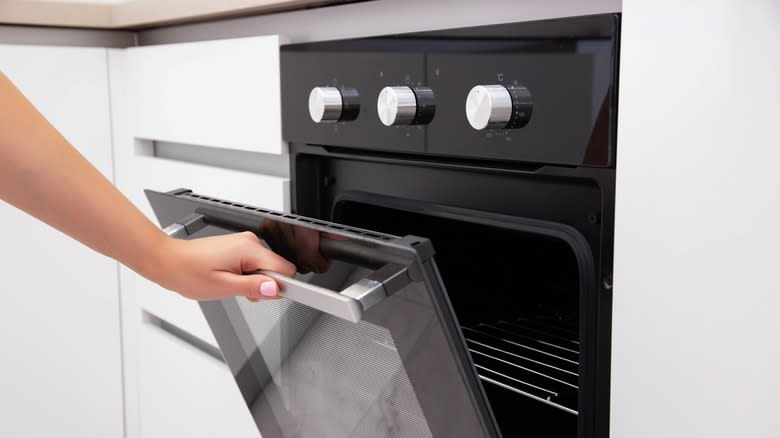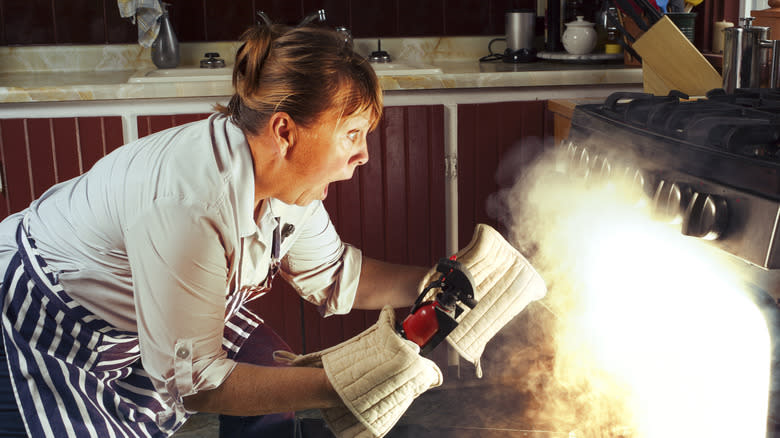Being Unfamiliar With Your Oven Settings Is A Recipe For Disaster

We've all seen trendy cooking gadgets come and go. And while professional chefs may need to cool it with the air fryer hate, it is understandable why they stand by the tried-and-true oven. An underappreciated classic. There's a reason it's stood the test of time, after all.
The oven can seem like an old, reliable friend. But while we may take our oven for granted, that doesn't mean it's an appliance to be taken lightly. Sure, they're useful, but like any electrical appliance (particularly one where heat is involved), they're going to be potentially dangerous if you handle them incorrectly. In the case of ovens, this isn't merely as simple and obvious as, say, not sticking a fork in the toaster, or allowing your dryer's lint trap to become a fire hazard. There are various settings on an oven, and you have to know how they work, otherwise, you could hurt yourself and others, or damage your home.
Read more: 8 Baking Sheet Mistakes You Want To Avoid
Know The Difference Between Broil And Bake

The key with ovens is to use the right settings for the right purposes. Luckily, this isn't strange or esoteric, like one of those universal TV remotes from the early 2000s that seemed to have more buttons than an airplane cockpit. It's pretty straightforward. One of the most important things to learn is the difference between broil and bake because the two are not interchangeable.
Baking typically heats food evenly on all sides, while broiling exposes the top of the food to direct heat using a flame coil located in the top part of the oven. If foods with a lot of grease or oil are placed too close to the broiler, or the setting is accidentally used instead of bake, this could cause grease to hit the oven coils. If too much liquid, grease, or fat hits the oven coils, you're looking at a fire hazard. This is why you're not supposed to put food that's sitting in a marinade under the broiler.
Self-Cleaning Features Can Be Dangerous

The self-cleaning feature on your oven is a bit misleading. In theory, it sounds great -- your oven cleans itself for you, saving you time and effort. In practice, though, it's dangerous to the point that there's an active debate about whether you should use the self-cleaning feature at all. A high-heat cleaning function can heat your oven from 800 to 1000 degrees Fahrenheit. This can either damage the oven or -- because this thing gets to a temperature that's an appreciable fraction of the surface of the sun -- start a fire all on its own. You probably want to avoid high-heat self-cleans.
Using a steam clean function is probably a safer bet if your oven has one. It heats up to only around 250 to 300 degrees Fahrenheit and uses water to loosen detritus from the oven, allowing you to wipe it away. None of this should make you afraid of using your oven, but it should make you aware of the potential safety risks and how to avoid them. Fortunately, it's not difficult, just start by thoroughly reading the owners manual.
Read the original article on Daily Meal.


